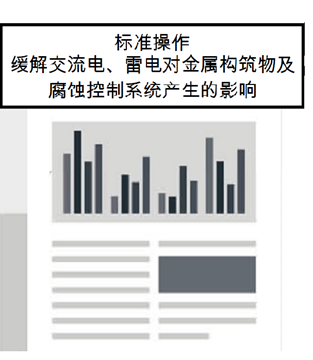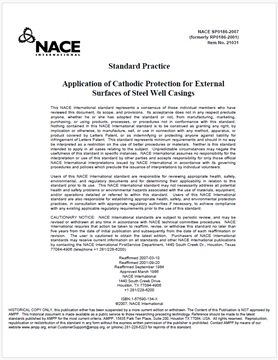Search
Products tagged with 'Standard Practices'
View as
Sort by
Display
per page
SP0170-2012 - Protection of Austenitic Stainless Steels and Other Austenitic Alloys from Polythionic Acid Stress Corrosion Cracking during Shutdown of Refinery Equipment
Product Number:
21002-HD2012-SG
ISBN:
1-57590-039-4
Publication Date:
2012
$179.00
SP0170-2018-SG Protection of Austenitic Stainless Steels and Other Austenitic Alloys from Polythionic Acid Stress Corrosion Cracking During a Shutdown of Refinery Equipment
Product Number:
21002-SG
ISBN:
1-57590-039-4
Publication Date:
2018
$109.00
SP0176-2007, Corrosion Control of Submerged Areas of Permanently Installed Steel Offshore Structures Associated with Petroleum Production
Product Number:
21018-SG
Publication Date:
2007
$179.00
SP0177-2007-SG (Chinese) Mitigation of Alternating Current and Lightning Effects on Metallic Structures and Corrosion Control Systems
Product Number:
21160-SG
ISBN:
1-57590-116-1
Publication Date:
2007
$179.00
SP0177-2014 (formerly RP0177), Mitigation of Alternating Current and Lightning Effects on Metallic Structures and Corrosion Control Systems
Product Number:
21021-SG
ISBN:
1-57590-116-1
Publication Date:
2014
$179.00
SP0181-2006 (formerly RP0181), Liquid-Applied Internal Protective Coatings for Oilfield Production Equipment
Product Number:
21025-SG
ISBN:
1-57590-205-2
Publication Date:
2006
$179.00
SP0186-2007-SG (formerly RP0186), Application of Cathodic Protection for External Surfaces of Steel Well Casings
Product Number:
21031-SG
Publication Date:
2007
$179.00
SP0187-2017-SG (formerly RP0187), Design for Corrosion Control of Reinforcing Steel in Concrete.
Product Number:
21034-SG
ISBN:
1-57590-012-2
Publication Date:
2017
$109.00
SP0189-2013-SG (formerly RP0189), "Online Monitoring of Cooling Water Systems"
Product Number:
21041-SG
ISBN:
1-57590-159-5
Publication Date:
2013
$109.00
SP0193-2016-SG (formerly RP0193) External Cathodic Protection of On-Grade Carbon Steel Storage Tank Bottoms
Product Number:
21061-SG
ISBN:
1-57590-014-9
Publication Date:
2016
$109.00
SP0195-2017 (formerly RP0195), Corrosion Control of Sucker Rods by Chemical Treatment
Product Number:
21069-SG
ISBN:
1-57590-122-6
Publication Date:
2017
$109.00
SP0196-2015 (formerly RP0196), “Galvanic Anode Cathodic Protection of Internal Submerged Surfaces of Steel Water Storage Tanks”
Product Number:
21077-SG
ISBN:
1-57590-189-7
Publication Date:
2015
$179.00












